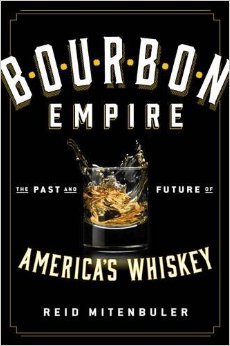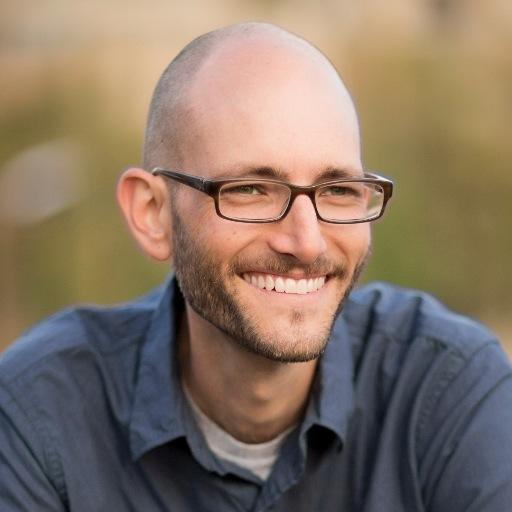Bourbon Empire: An Interview
I read a lot of bourbon and whiskey books. I’ve even created a list of some of my favorite books here. Every now and then a book comes along that is a must read. Bourbon Empire is a must read for every bourbon enthusiast. It gives the history of bourbon through storytelling. Bourbon Empire (affiliate link. Here is a non-affiliate link) skips over the glossy aspects of marketing lingo and gets straight to real information. Whether that’s NDP’s, craft distilleries or hyper-aging Bourbon Empire addresses each issue with facts instead of facades.
There were multiple times reading (actually, listening via audible) that I would think “exactly!” because the books straight forward approach to whiskey marketing. After reading the book I reached out to the author, Reid Mitenbuler, for an interview on Bourbonr. Our phone call ended up lasting over an hour. Reid’s insights into the bourbon world today are just as interesting as the book.
The book talks a lot about bourbon cycles. Which cycles do you see bourbon repeating?
I think it’s useful to remember that there will always be booms and busts, just like any industry. Bourbon’s like fashion that way — hemlines go up, then they go down, different looks cycling in and out of popularity. Bourbon lost it’s popularity in the 70’s as vodka took the spotlight. Now, bourbon is back. With that being said, America has long been a whiskey drinking country, so I wonder if its massive drop in popularity several decades ago was a little anomalous.
How do you feel about the recent drop of age statements by some brands?
I understand that older isn’t necessarily better, that some whiskies age differently than others, and that some consumers sometimes obsess about age too much, but I disagree with the current trend of denying customers information. Bourbon’s revival has been driven partly by that kind of foodie-ism where people want to know about products they consume. So, I’d prefer to see companies give more information, not less, even if it means listing a lower age statement when they want to move their supply faster — but I’m not sure that will ever happen, for obvious and understandable marketing reasons. Still, it’s an ideal. As for age, I like to compare aging bourbon with cooking meat. You don’t want it charred, too woody so to speak, but you also don’t want it raw, under say four or five years old. And of course there are always exceptions.
What was your favorite story from the book?
Lewis Rosentiel of Schenley is a story that sticks out to me. The way the Big four lobbied and the fact that it was New York businessmen who, in a very unromantic way, had such an influence over the whiskey industry, is a story that isn’t usually told. There were connections to organized crime and all kinds of juicy stuff. He lobbied to increase the bonding period from 8 to 20 years and was a driving force behind the 1964 resolution to have Congress declare it a unique American product.
Where does the process of a book like this begin?
I’ve been into bourbon and whiskey for a long time and about a decade ago began researching heavily into a lot of the stories that are in the book, on the side. I spent about a year full-time on it, during the writing. But I’m a slow writer.
Where do you see bourbon moving to in the next decade?
I’m looking forward to more craft producers getting their sea legs. They’ll help reinstate the kind of variety that was lost from American whiskey during 200 years of consolidation. I also look forward to more people learning and becoming geeks. It’ll be awesome when, decades from now, whiskey connoisseurship has evolved to the point where we can look back and chuckle at the folly of small barrels and shenanigans like that, truly understanding where the fault lines are between truly great whiskey and half-ass whiskey. That’s the dream, anyway.
With that said, I think people should be intellectually open about new technologies and ideas that are genuinely innovative and viable. I mean, it would be awesome if someone could make “15-year-old whiskey” in just 3 months, using science to figure it out. Of course, that has happened yet, despite the attempts by some to do it. But I like the idea of being open minded about new things while respecting traditions that have become tradition for good reason.


6 comments
I’m very interested in the other books you recommend, but the link isn’t working.
Fixed!
I read the book last fall cover to cover and thoroughly enjoyed it! I even passed it on to my Mother-in-law who really enjoys history and she keep quoting parts to me, knowing my love or bourbon. She learned so much about ‘wheaters’ she bought me a bottle of Larceny for me to sip when I stop over. . . .what’s wrong with that?. . .!!
….nice!…..if only *ALL* mother – in – laws could be like yours….
This book is something that I would be interested in and would buy. It has gotten some great reviews in the whiskey circles and at just under $20 at Barnes and Noble only seems logical to pick up….so, off I go to Barnes and Noble.
Was interested in Ried’s comments on Elijah Craig 12 yr., but they don’t come up in the full article….
Did I miss something?
Bo